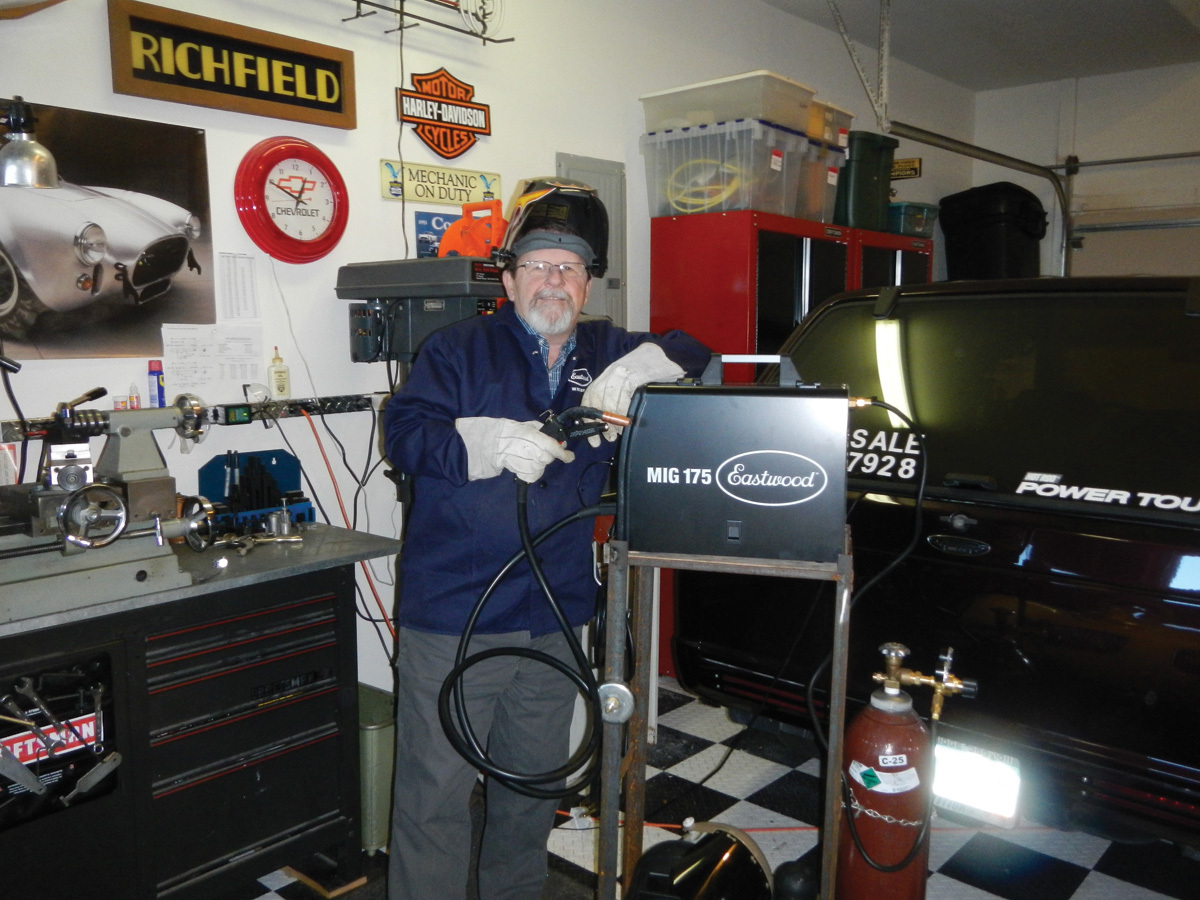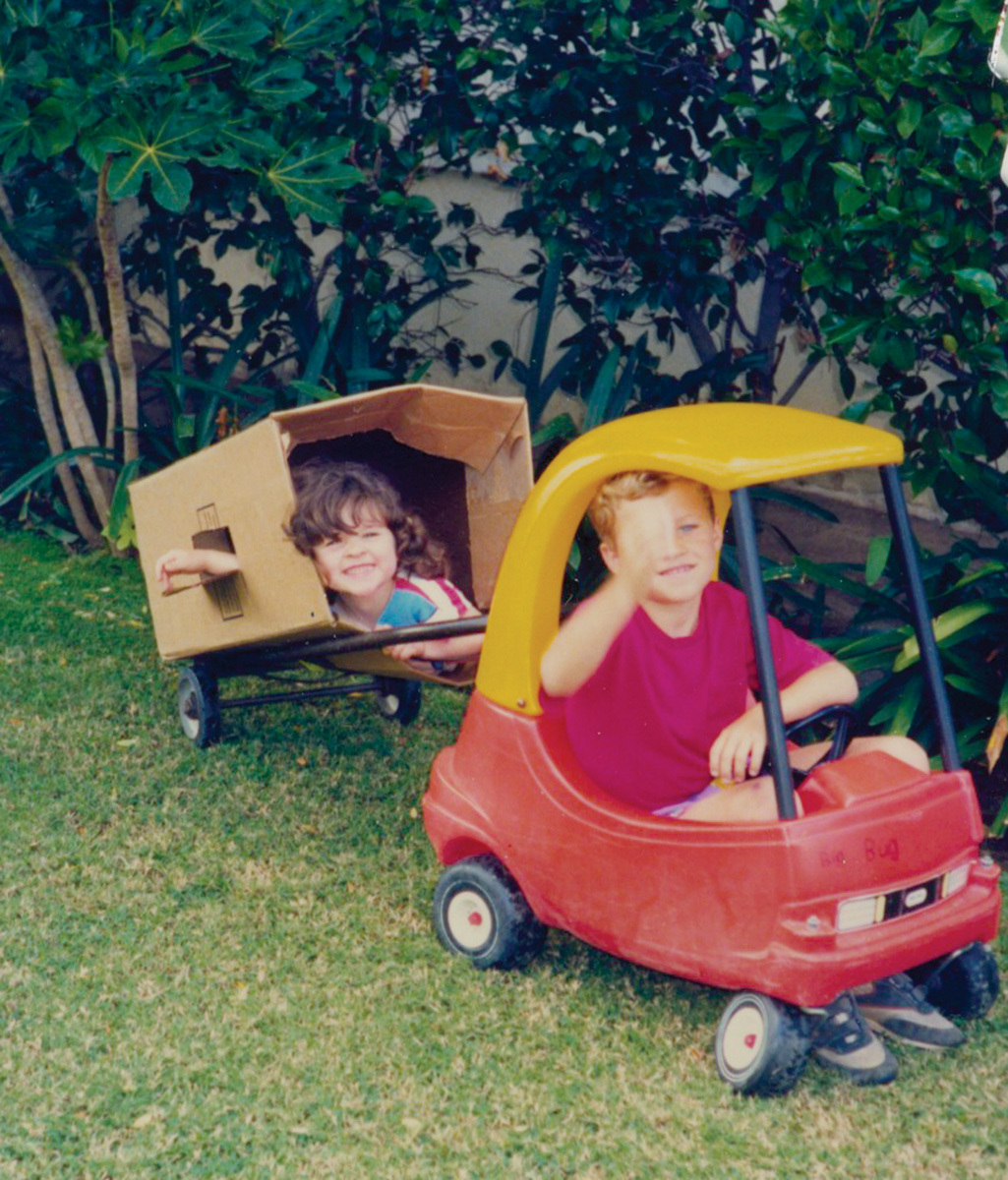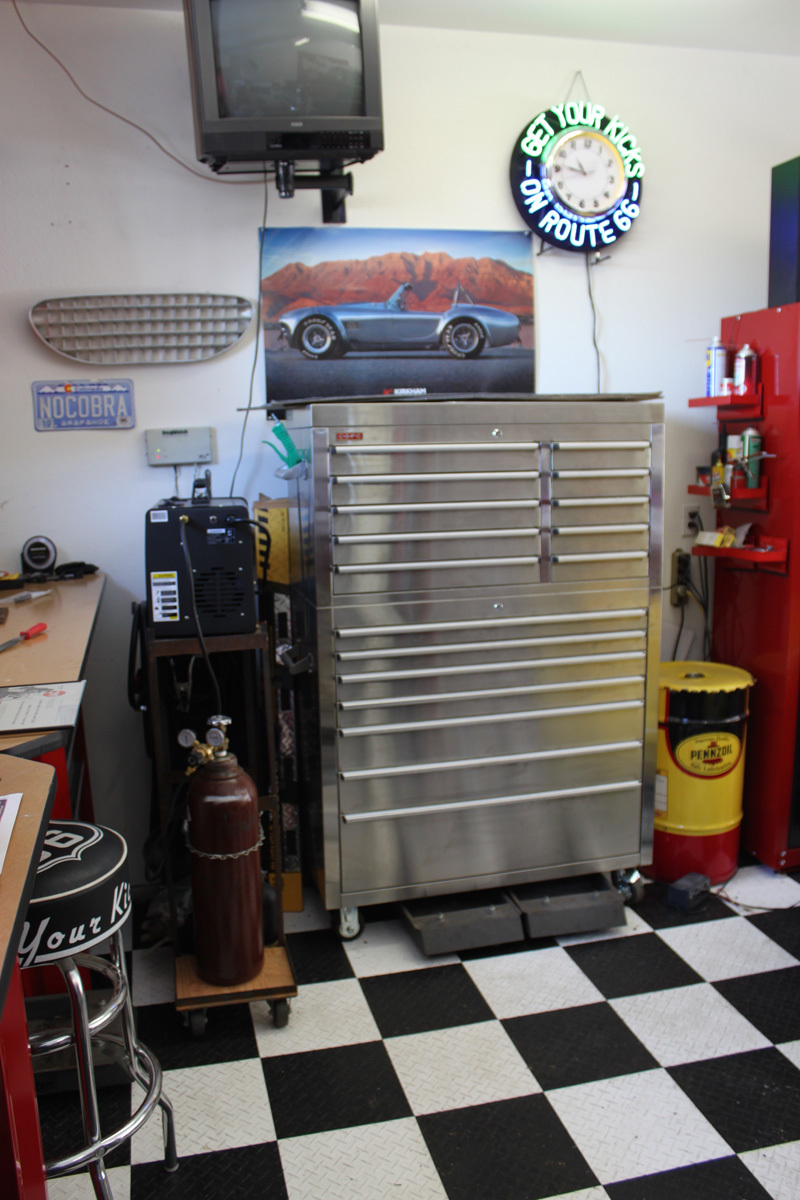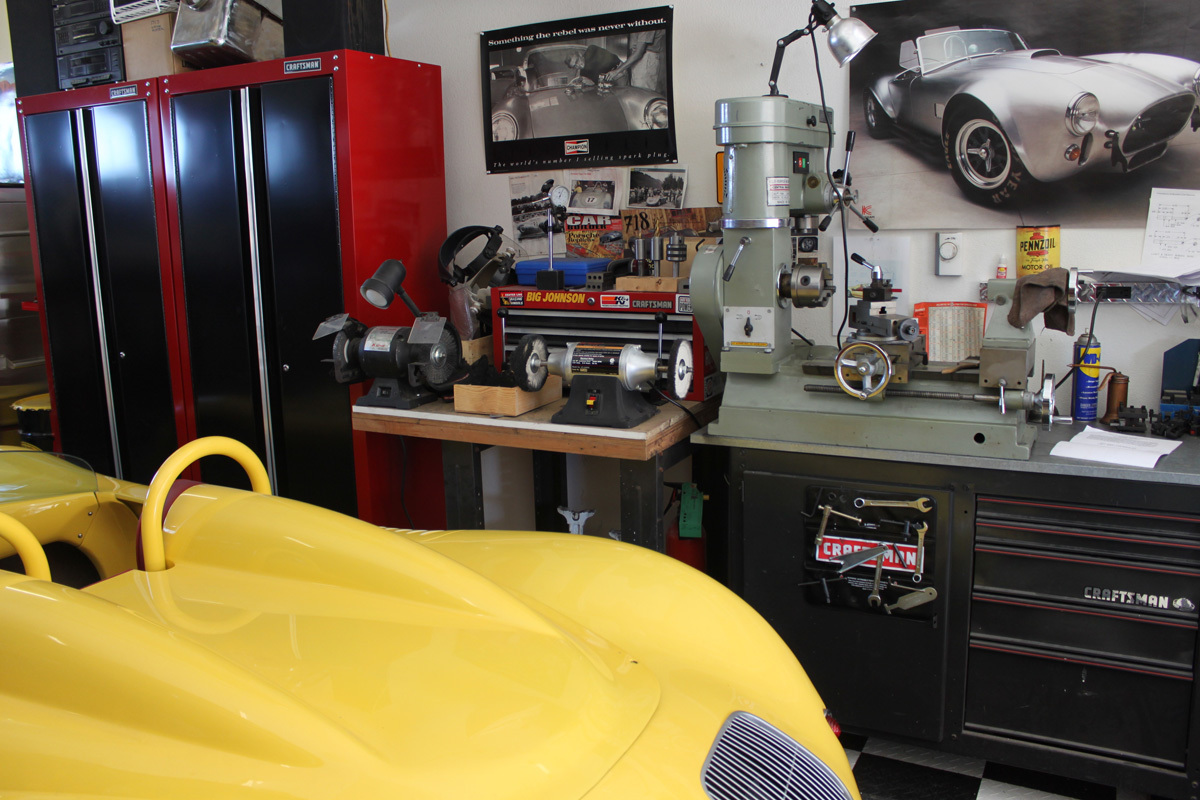
My Latest Kit Project
By Jim Youngs, Editor Emeritus
The kit arrived in a single big box a few weeks before Christmas, but thanks to a magazine deadline issue and preparations for the holidays I didn’t pay much attention to the delivery. In the back of my mind, though, I suspected that the project would fall on my plate. After all, I had built one of these same kits before, but it had been something like 30 years ago and at a time when my automotive tool collection and skill levels were both in their infancies.
The origins of this car date back more than 30 years. And apparently it has a remote design connection with Chrysler. (It was created by Jim Mariol of Cincinnati-based Design Alliance, who had worked as a designer at Chrysler starting in 1952.) Described as a cross between a VW Bug and Fred Flintstone’s car, in 1991 this curious amalgam was the top-selling car in the U.S., with over 500,000 sold that year. In fact, the car reached six million units in sales by its 25th anniversary in 2004.
You could say that this 2013 model is a replica of the original, as my 35-year-old son, who owned my original build, discovered on Christmas morning, after a diligent internet research. Turns out the original car was redesigned in 1998, and is, like most cars these days, downsized from what was available in the late ‘70s.
The car doesn’t allow for much personalization but does come with an excellent build manual. The build-up is also rather quick since bodywork, paint and drivetrain aren’t required, and neither is the typical angst-laden choosing of wheels and tires as they are included in the kit. There’s minimal trim or brightwork on the little coupe, nor any need for electrics, brakes or even a steering rack.

I’ll admit I was a bit crestfallen, too, since the build wouldn’t require the use of any of my cool tools or any of my self-taught fabrication skills that I’ve managed to acquire over the years of building cars. The saddest part I suppose was the realization that I couldn’t buy some obscure tool to add to my roll-away. The truth is this kit would only require what I could grab in among the random assortment of hand tools in my wife Carolyn’s rummage drawer in the laundry room.
So there wouldn’t be any need for one of my favorite pass-times, that of scouring the latest Summit Racing catalog in search of some anodized AN fitting or an intriguing widget that I could add to the kit build. Apparently I wouldn’t even have to fire up my mill or lathe to make some aluminum adaptor or bracket. It wouldn’t even require the use of my shop lift. It was looking like this kit project wouldn’t be much of a challenge at all.
But none of those things really mattered as a bunch of us family guys agreed upon its completed delivery to its new owner on Christmas morning. As we watched its thrilled little gal owner grab her kiddie cell phone, open the driver’s side door and climb in behind the wheel, we made a list of a few updates we could probably do if she ever got out of it.
We reasoned the best place to start would be a powdercoated tubular steel chassis to stiffen up the rather flexible body, followed by a set of polished billet wheels wrapped with some wide, sticky go-kart rubber. Well, you get the idea. The car just cries out for some updates and customization. About the only personal touch I could come up with before delivery was a baby’s first bumper sticker that reads, “I [insert red heart symbol] Grandude.”
As you’ve surely guessed by now, this kit is a Little Tikes Cozy Coupe, first sold in 1979. It was for my then 15-month-old granddaughter, Reagan (and you thought you’d heard the last about her when the QueenBee retired from writing a column for this magazine). The car was an immediate hit with this not-quite-walking toddler and didn’t require any adult instruction on how it worked. She was most content to just open the door and sit in its comfy cockpit to enjoy some drive-through snacks, chat on her phone (no texting yet) and climb in and out. Subsequent reports indicate that she spends a lot of time in her new Cozy Coupe.
We figured it would be most welcome since our own kids, James and Monica (Reagan’s mom), spent countless hours with theirs back in the day running up and down the sidewalk in front of our home. Big brother even shared seat time with his four-years younger sister and yes, theirs was a bigger model that allowed both of them to sit side by side. They even constructed elaborate trailers for the coupe made of a two-wheeled handcart and a box so that little sis could enjoy the fun without spreading cooties in the cockpit.
I can’t recall at what age big brother outgrew the Cozy Coupe in favor of a couple of rechargeable electric cars, but sis continued her enjoyment of the little plastic car for quite some time.

That bit of history also give us some ideas about future gifts for Reagan as she grows—an electric Escalade perhaps followed by a motorized go-kart or mini bike and then maybe a certain ’54 Belair hot rod that belonged to her mom upon getting her driver’s license.
Well, we have plenty of time to ruminate about those wheeled gifts and are content to just watch this cute car-gal enjoy her current ride and the kind of freedom that comes with being mobile—and learning to walk which will make the Cozy Coupe motivation even easier. [Editor’s note: this cute little apple sure didn’t fall far from the tree, considering all the cars Jim and Carolyn have built and enjoyed over the years.]
Even though I didn’t have to use any of my tools or equipment from the Taj Garage on this latest project, your new editor pressed me to share some perspectives as an autodidact; that is, someone who learns on his own, or as Wikipedia says, “…seeks instruction or guidance from experts, friends, teachers, parents, siblings or community.” I’d also throw in the Internet there as I’ve discovered recently a wealth of useful how-to videos and written information to further my autodidactic education.
For example, I learned the proper way to insert the three jaws into my lathe’s chuck (since there was no owner’s manual that came with this Chinese tool), how to remove wheel-lug locks when the key has been lost, the very useful process of enlarging a hole in a steering wheel adaptor with a boring bit, and other such handy information that I’ve already put to good use.
I think I’d credit my first foray into becoming an autodidact—at least as it applies to automotive pursuits— probably occurred shortly after acquiring my first car. I’ll admit here that my learning curve started at a pretty low level on the skills scale and had a lot to do with the quality of the tools available at the time. Throughout my history of dealing with automotive issues, any skills I’ve developed from that earliest project have been the direct result of an exponentially improving tool collection. And as better and better tools have taken up residence in my rollaway and elsewhere in the shop, more and more autodidactic pursuits have improved what I’m capable of accomplishing.
That first car was a well-worn ’54 Chevy Delray that I bought in about 1963. I really didn’t have the bucks to do much to it, but we sure drove the wheels off it. At one point, I had to replace the three-speed manual transmission, the first major automotive work I ever tried. Aside from dropping the transmission on my chest when pulling it out, I scraped up enough dough to also buy a Hurst Mystery Shifter on sale at Pep Boys.
Once the new tranny was in place, my buddies and I tackled the shifter install. Good tools were rare in the neighborhood, so about the best we could come up with for cutting a hole in the trans tunnel was a cold chisel and a claw hammer. It was not a pretty modification by any means, but we got it installed after several weekends and thought it was so cool to have a three-on-the-floor instead of a three-on-the-tree. The coolest part though was placing the Hurst stickers on the rear quarter windows to announce to everyone at school that I was indeed driving a “modified” vehicle, a hot rod!
While I worked on all my rolling junk that followed that Chevy, it really wasn’t until I started writing kit car stories back about 1991 that car building and tool collection took off in earnest, and by extension my continuing education.

The first cool tool I purchased, and something that I now consider a necessary staple of any shop, was an air compressor. When the day came that I finally bought a Campbell Hausfeld 25-gallon compressor at Sam’s Club, I was helped cheerfully by several old-timers hanging out in the tool aisle to load it on the flat-bed cart. It served me well for many, many years until I just recently replaced it with a 33-gallon Craftsman upright unit with two air outlets, and no leak-down!
That original compressor also introduced me to the wonderful world of pneumatic tools and the confusing array of quick-disconnect fittings. How I ever got along without air tools I’ll never know. My favorites are the very cheap, compact die grinders from Harbor Freight. Practically anyone can afford those little grinders and have a bunch of them on hand, fitted with a variety of cutoff wheels, burrs, sanding discs and such so you don’t have to stop working to constantly change the consumables. I’m also pretty fond of impact wrenches and lately a certain air hammer.
About 13 years ago I made one of the best garage equipment purchases possible and immediately became the envy of most any shop rat you can imagine. I bought a Superior drive-on hydraulic lift and pretty much built an oversize six-car garage around it. I would no longer have to crawl under a precariously supported vehicle to get at the undercarriage, and given my aging body, that benefit alone would be most welcome. Truth is, since my projects typically span years instead of days, the lift mostly serves as an elevated parking spot with space underneath for another car. However, it’s especially appreciated these days, as the parked car thereon is a ’54 Chevy Belair undergoing a complete suspension upgrade, V-8 engine swap and modern transmission.
Regarding the more intimidating aspects of car building—welding, painting and upholstery—I attacked the first two of the three in an attempt to learn how to do them. I still don’t have the painting skills down, as my first project was something small that didn’t require a lot of the most important, and tedious, aspect of the skill—bodywork. I did, however, dive head first into welding, which leads to a short discussion of my next favorite tool. Quite a few years ago I bought a cheap, 115-volt, wire-feed MIG welder and got some tips from the guy who sold it to me. Admittedly it was rather underwhelming and overtaxed for what I wanted it to do, but I could get a couple pieces of steel to stick together, in what could best be described as booger welds.
I was able to make a pretty stout, steel welding cart as my first welding project and it serves me yet today but now holds last year’s favorite tool purchase, a 240V Eastwood wire-feed MIG that has already made me a much better welder.
Tool buying is not only a fun activity, but it can also serve as a teachable moment. Case in point, the QueenBee (yes, she told me yesterday that she still wants to proudly carry that moniker bestowed by your current editor) learned firsthand the importance of owning the right tool, and even more than one of the same tool. Back in 2001 she bought into a three-car project for another kit magazine so she could finally understand this attraction for building one’s own car. She got an up close and personal autodidact experience on tools and now doesn’t bug me too much when I come home with something new.
To balance things out, in sort of a quid pro quo arrangement, I regularly point out the value of our kitchen tools such as a mandolin slicer, lettuce knife, pasta maker and other such handy devices that make our lives easier and more enjoyable. That’s all for now, so I can get back to paging through the latest tool catalog that just came in the mail...






Comments for: My Latest Kit Project
comments powered by Disqus